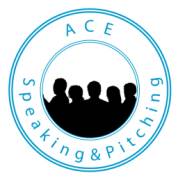You can do a variety of things to have a better grasp of your audience. Here are five actions you can take:
- Research in Advance
Research your audience’s demographics before the meeting or event. Don’t just focus on the basics; dive deeper to learn about their interests, education, background, and preferences for intercultural business communication, among other things. The more you learn, the better prepared you’ll be to write or speak to a variety of people.
Speak with the meeting’s organiser to determine the audience’s level of understanding of the topic at hand. Look over the website and acquaint yourself with the event’s mission as well as the audience’s expectations if you’re giving a presentation at an industry event.
If you’re presenting in-house to a corporation, research them thoroughly by visiting their website, reading their press releases, social media channels and reading their blogs. Connect with key people via LinkedIn too and see what topics and subjects they are interested in.
- Call and Response Technique
At the start of your talk, use the “Call and Response” technique. One to one or one to a few you can start by asking open-ended questions to learn more about the audience, however in a large group this is not practiced on so many levels. In a larger group, closed questions can allow feedback and engagement. Determining their level of knowledge about the topic will allow you to adjust your speech accordingly. You can also use this strategy to figure out how the crowd is feeling and responding to what you are saying.
- Invest Time
Spend a few more minutes in a meeting or on the phone with your clients to get to know them better. Take notice of their hobbies and interests to determine what makes them unique among all of your clients. Then, whether in writing, on the phone, or in person, use that knowledge to demonstrate that you’ve genuinely listened to them. If it is a large group you are talking to, researching who is in the audience and drilling deeper on a sample of the audience could give you an insight into the larger crowd.
- Audience-Centred Approach to Speaking
There is minimal opportunity to clarify your point during or after the speech because for most speakers there is usually a little discussion between the speaker and the audience. Learn how to interact with the crowd and you will take your presentations to an even higher level. Knowing them will allow you to ask questions that get engagement through agreement. Understanding the audience and tailoring the message to them is crucial while planning a speech. You should create a talk or presentation that is oriented toward the audience, or one that is focused on the audience. Beyond the content the language also needs to focus on the audience.
Knowing your audience is a vital part of the speech-making process because you are speaking to and for them when giving a public talk.
- Taking Perspective to Find Common Ground
You should conduct an audience analysis before your speech to develop a connection with the audience. You should be able to mentally enter the minds of your audience members to understand the world through their eyes. This strategy allows you to build common ground with your audience, aligning your message with what they already know or believe and shift their thinking on the beliefs that are not serving them well.
Once you deeply understand your audience and their expectations, you’ll be able to customise your speech to make it more impactful. Your audience will be engaged and satisfied, and you will gladly accept their applause at the end

